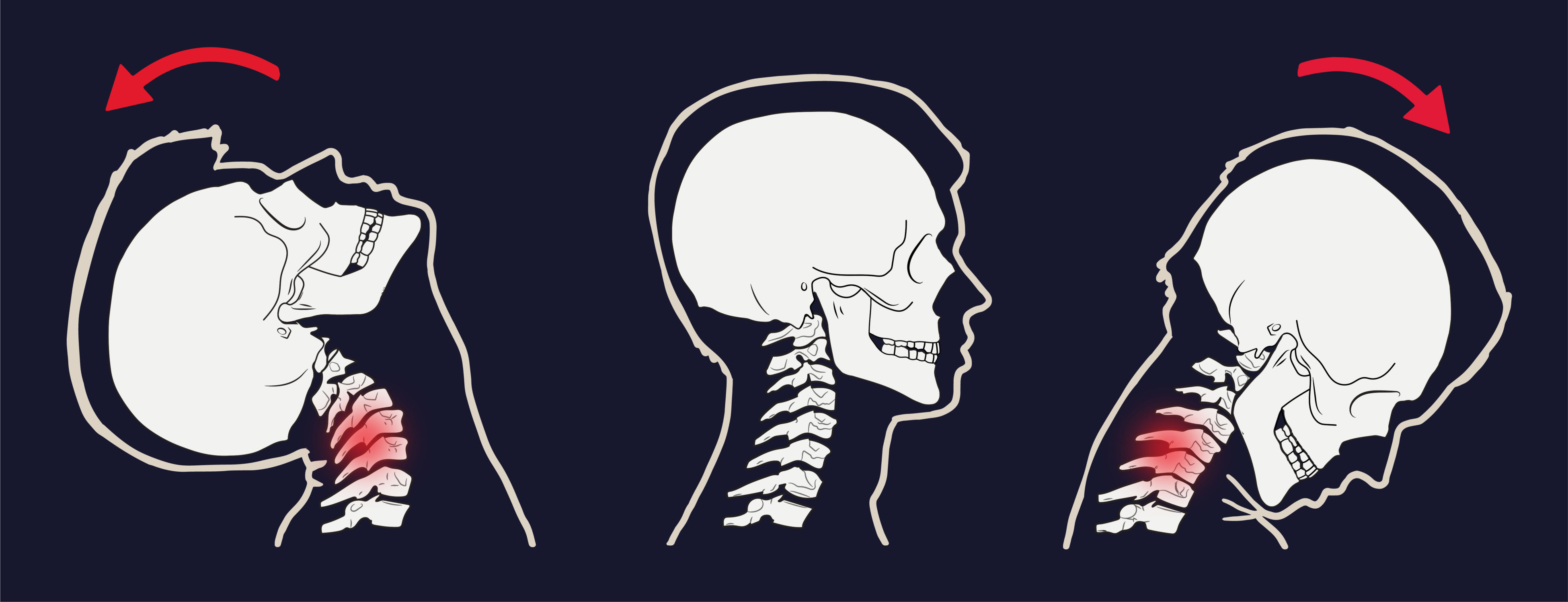“Breath in, hold, now sit up.” You’ve been going to yoga three times per week for the better part of a decade, but today your head feels heavy. As you try to move into each pose and relax your mind you are regularly jarred by the discomfort in your neck. On the way out of class you mention this to your friend, who wonders if it could be related to the car accident you got into a few days ago and suggests that maybe the adrenaline rush after being rear-ended masked the initial pain. You consider how to find out what is going on, which is when your friend suggests seeing their physical therapist (PT).
Physical therapy for whiplash
You go home and give the physical therapy clinic a call. The receptionist is happy to help get you scheduled and even offers to verify your insurance coverage. They double check your motor vehicle accident (MVA) claim and confirm that it will cover your rehabilitation.
The next day you arrive at your initial physical therapy evaluation wondering if they will be able to help you. Your PT starts by asking you questions about the accident then shifts to what symptoms you have been experiencing. You mention neck pain, your head feeling heavy, and that you have had headaches at work since the car accident. Your PT then asks about your goals for therapy. You explain that you want to: understand what is causing your symptoms, get back to feeling and moving normal during yoga, be able to get out of bed in the morning without straining your neck, and get through a day at the office without a headache.
How whiplash is diagnosed
Your PT starts the physical exam after they state, “Great, now we know where we want to go, let’s see where we are today.” Things start out simple enough — they check how far you can move your neck and shoulders and test the strength in your arms. The toughest part comes when you are lying down, and your PT asks you to tuck your chin and lift your head — you can barely hold this position at all. When your PT feels the back of your neck you are surprised at how tender it is.
After the evaluation you sit up and your PT goes over what they found. They diagnose you as having “whiplash,” a common neck injury after a car accident, and list the common symptoms.
Common symptoms of whiplash:
- Neck pain/soreness
- Neck stiffness
- Headache
- Shoulder and/or arm pain
- Dizziness/vertigo
- Head feeling heavy

Three of these symptoms stick out to you: headache, head feeling heavy and neck pain. You instinctively ask your PT if you need to get an x-ray. They explain that at this point imaging is not necessary, and reassure you that if you do not start to see progress in a couple of weeks then imaging could be the next step.

What causes whiplash
Next, your PT explains that the sudden impact during your recent car crash caused your head to whip forward and then backward quickly. This caused the front of your neck to be over stretched and the back of your neck to compress, which resulted in a strain/sprain to the muscles, tendons, and ligaments of the front of your neck and bruising to the bones/joints of the back of your neck. This created an imbalance in your neck, with the front weaker and the back tighter. It also has led to tension at the base of your head that is causing headaches.
As you learn about the cause of your whiplash, you wonder why the injury was not apparent immediately. Your physical therapist explains that it is common for there to be a delay from the time of whiplash happens to when you begin to feel the bulk of your symptoms. You learn that this is due to the inflammation process, and the way adrenaline masks whiplash symptoms initially. You are relieved to know there is an explanation for your symptoms and excited to learn what can be done about it.

What to expect from PT treatment for whiplash
Your PT follows their evaluation with working with you to develop a plan for recovery and rehabilitation. Your complete, customized plan of care will include both short- and long-term pain reduction treatments. To improve pain quickly, your PT explains, they will provide some hands-on work in the form of massage and joint mobilizations and recommends using heat and/or ice at home. The long-term treatment centers around progressive strengthening and stretching exercises in the PT clinic, complemented by some at-home exercises. The moves you will be doing will help strengthen the front of your neck and stretch out the top of your shoulders. You’re thrilled to know that you can expect to start to see some improvement in the next few weeks, and that if you are committed to your recovery will likely be back to feeling like yourself by the end of six or eight weeks.
You are also extremely happy that your PT encouraged you to keep going to yoga and simply advised that you ask your instructor to help you modify any positions or movements that bother your neck. On the way out after that first appointment, you schedule follow up appointments at the front desk, excited to start working to get back to feeling like yourself again.
Recovery from whiplash

After dedicating yourself to your physical therapy journey, you soon realize your headaches at work have subsided and you are feeling stronger at yoga. Getting out of bed is no longer a chore, you are starting to really feel like your normal self again. You have been able to increase the challenge of your home exercises and are feeling steadily stronger. At your next physical therapy appointment, you discuss your improvements with your PT. Together you decide you are ready for a re-test. After you complete each of the strength and mobility tests, passing each without pain, your PT reviews and discusses the results with you while considering the plan going forward. Utilizing shared decision making, you and your PT decide that you are ready to graduate from physical therapy.
The next day is your regular yoga class. You are excited to go through the workout without changing or modifying anything and to thank your friend once again for suggesting you try physical therapy for your neck pain after your car accident.
According to the National Highway Traffic Safety Administration (NHTSA), there were nearly seven million vehicle accidents in 2019, with rear-end crashes accounting for approximately 29 percent of those reported incidents. Physical therapy is a vital part of avoiding prolonged pain and complications and of making a full recovery after any MVA. Whiplash symptoms do not always show up right away, so even if you or someone you know had a crash a long time ago, it is not too late to schedule a visit with your physical therapist and get on the road to recovery.
We look forward to being a part of your healthcare team.
From injury recovery to understanding and managing pain, patient success is our passion. Our therapists are committed to patient education and to the application of evidence-based treatment techniques to ensure you experience the best in rehabilitation and preventative care.


